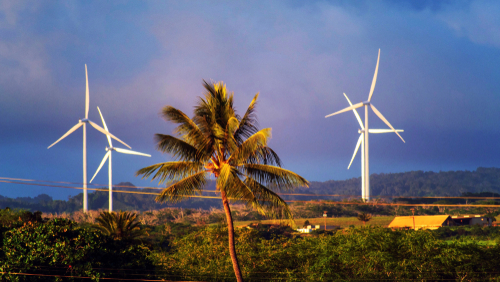Hawaiian Electric to begin negotiations for 15 potential renewable energy developments

In a bid to make retiring older fossil fuel generators easier and reduce dependence on imports, Hawaiian Electric announced last week that it began contract negotiations with developers for 15 renewable energy projects on Oahu, Hawaii Island and Maui.
The largest of these will all be centered on Oahu, though, with the Waiau Repower and Base Proposal biofuel projects, topping out at 253 MW and 208 MW respectively, far and away the largest individual projects. Said projects also went all the way down to 6 MW, though, as in the case of Puuloa Solar, also to be built on Oahu. By including things like biofuel in the mix, it also means that this round of new renewable generation will have some firm clean electricity, meaning they won’t be dependent on things like the sun or wind to produce.
In all, the array of projects will include seven for Oahu, four for Hawaii Island and another four for Maui. Approximately 517 MW of the new generation will be variable, 654 MW will be firm and 2.1 GW hours of storage will be tacked on for good measure.
“These projects will help move Hawaii closer to its clean energy goals, while adding critical grid reliability with firm renewable energy,” Rebecca Dayhuff Matsushima, vice president of Resource Procurement for Hawaiian Electric, said. “Adding energy storage and generation from firm renewables to our portfolio will make it easier for Hawaiian Electric to retire older, less flexible fossil fuel-fired plants.”
Project completion dates will range over the next decade, with the earliest finishing up in 2026 and the longest taking until 2033. Proposals for the firm renewable capacity on Maui are being handled separate from the others, though, with final selection set for January 2025.
Only once contracts between Hawaiian Electric and developers are finalized will they be submitted to the Public Utilities Commission (PUC) for review and approval. While there will likely be price and bill impacts as a result, they won’t be made public until that time.
